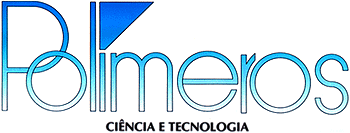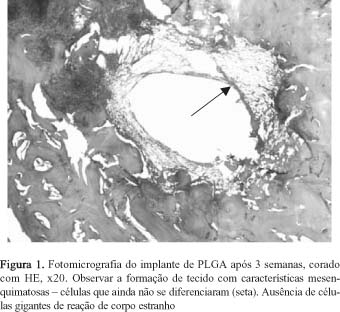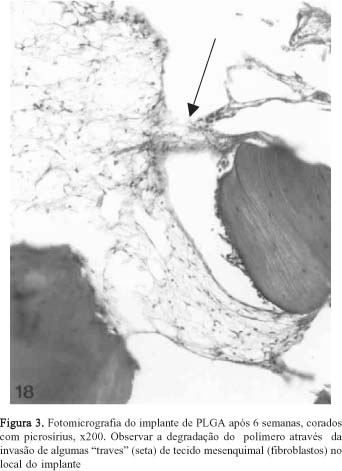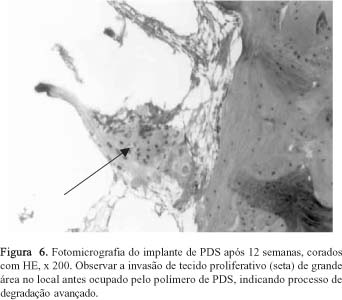Os dispositivos biorreabsorvíveis são alternativas para fixação interna das fraturas. Durante o tratamento estes dispositivos mantêm a fixação e degradam-se gradualmente não necessitando de uma cirurgia de remoção, reduzindo o custo de tratamento quando comparadas aos dispositivos metálicos. O objetivo desse trabalho foi estudar a interação polímero/tecido utilizando pinos de PLGA e PDS após implantes em coelhos Nova Zelândia. Separou-se os animais em 3 grupos os quais foram sacrificados após 3, 6 e 12 semanas de implantação e o material obtido foi submetido à análise histológica. As análises histológicas com implantes de PLGA mostraram após 3 semanas a formação de um tecido com características mesenquimatosas e com 12 semanas a formação de uma estrutura óssea madura. Já nos implantes de PDS de 3 semanas houve uma maior invasão de tecido mesenquimal comparado ao PLGA e após 12 semanas, ocorreu uma degradação avançada, com tecido proliferativo mesenquimal e ósseo. Assim, concluiu-se que ocorreram resultados positivos à resposta tecidual/implante e foi relevante a observação da ausência de células responsáveis pela resposta inflamatória. As análises demonstraram que o copolímero de PLGA apresentou propriedades osteoindutivas mais adequadas que os de PDS, apresentando biocompatibilidade aceitável para aplicação ortopédica.
Poli (ácido lático-co-ácido glicólico); poli(p-dioxanona); osteoindução






